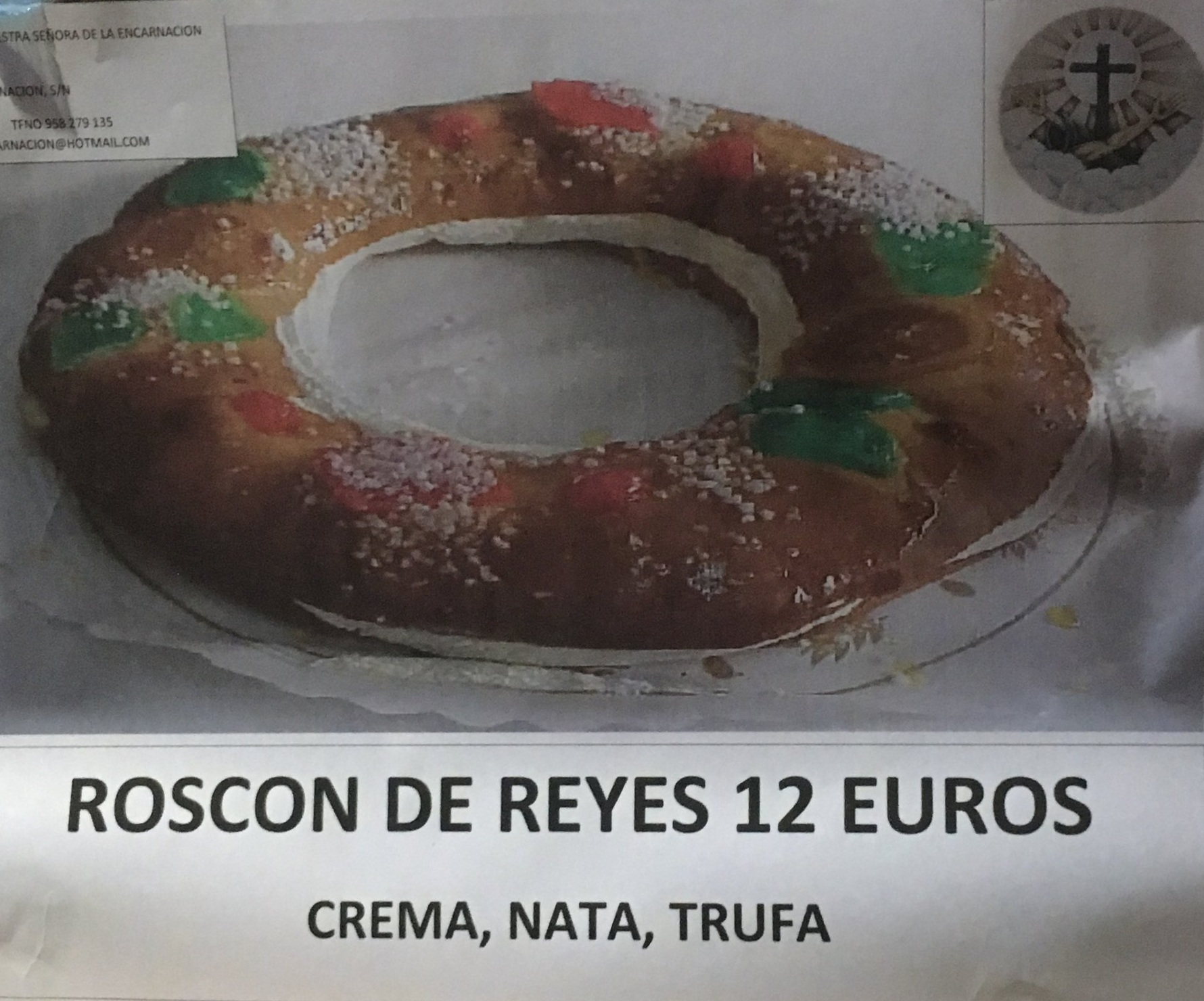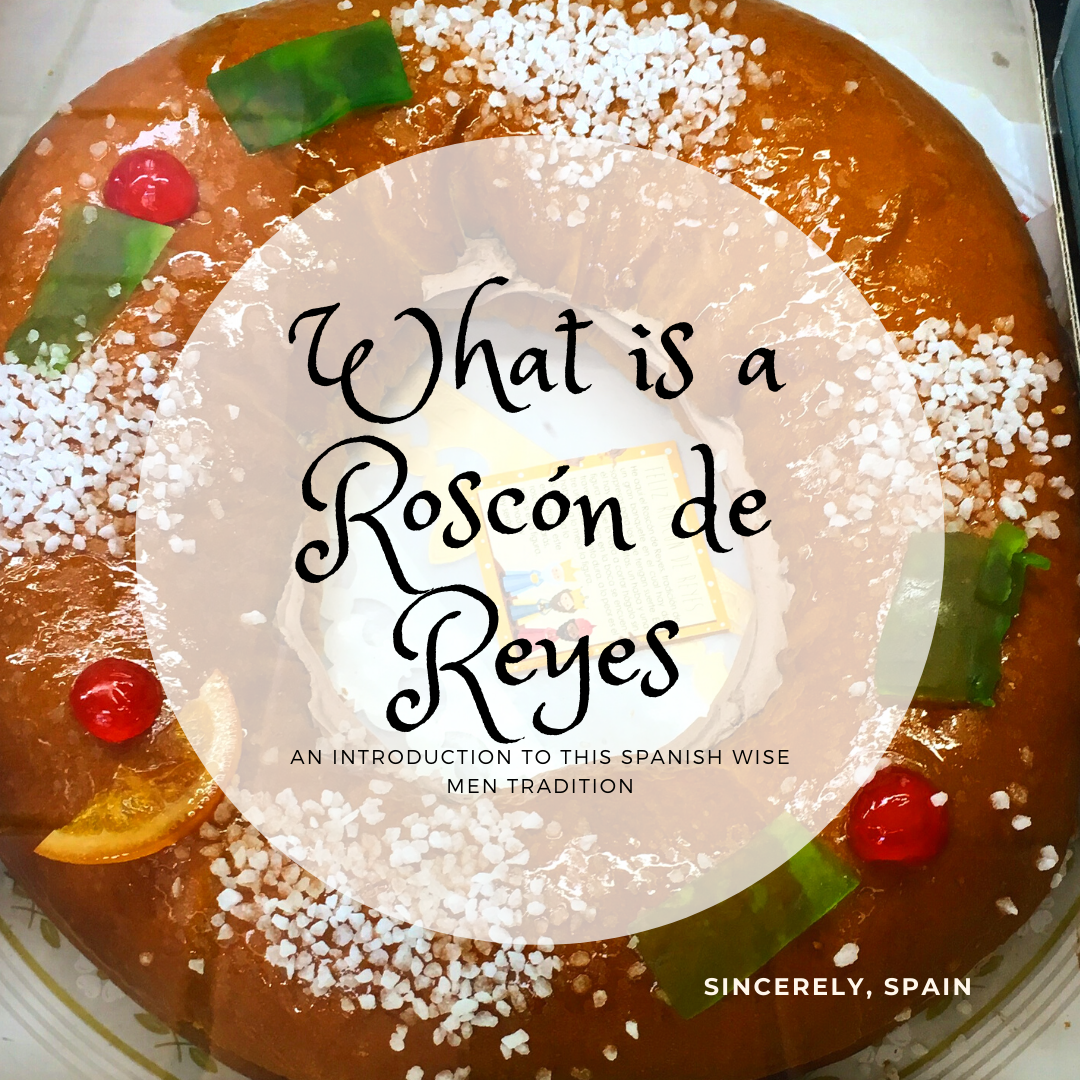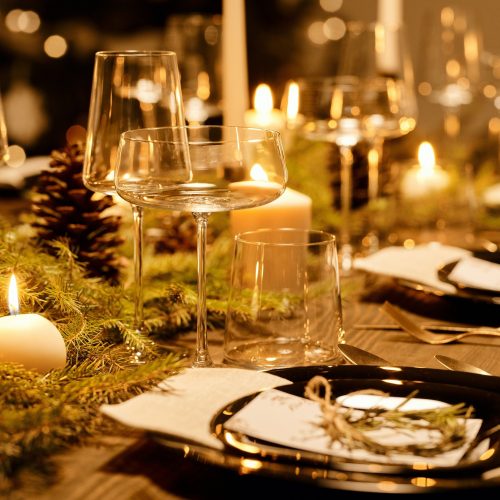
What is a Roscón de Reyes in Spain?
Dear Jamie,
 One of the most common things you will see in bakeries in Spain during the Christmas holidays is a large bagel-shaped cake, usually cut in half long-ways and filled with whipped cream or other sweet fillings. This cake is called a Roscón de Reyes—roscón is the large bagel shape of the cake itself and the Reyes refer to the Three Kings that Christians recognize as the Three Wise Men who brought the baby Jesus gifts on the 6th of January. And, for any true Spanish celebration of the Epiphany, you should definitely have a Roscón de Reyes on your table. While you can make your own version, it is not uncommon to buy a cake at a local bakery or even one made by nuns.
One of the most common things you will see in bakeries in Spain during the Christmas holidays is a large bagel-shaped cake, usually cut in half long-ways and filled with whipped cream or other sweet fillings. This cake is called a Roscón de Reyes—roscón is the large bagel shape of the cake itself and the Reyes refer to the Three Kings that Christians recognize as the Three Wise Men who brought the baby Jesus gifts on the 6th of January. And, for any true Spanish celebration of the Epiphany, you should definitely have a Roscón de Reyes on your table. While you can make your own version, it is not uncommon to buy a cake at a local bakery or even one made by nuns.
Note: During the Christmas holidays in Spain it is common that nuns sell special holiday cookies and other pastries. I am not totally sure if this is entirely tradition (although part of it is the tradition) or just a way to supplement their income.
The history:
Like many traditions, the Roscón de Reyes has many potential origins. While some people believe that it has always been part of a Catholic celebration, others tie the sweet cake with candied fruit to similar traditions carried out by the Romans celebrating Saturn where a comparable cake was made. Despite the oficial origins, this Roscón has been part of the celebration of Reyes from around the 12th century as we can see its appearance is several written works by different authors around the Iberian Peninsula. Although the celebrations had different names in different regions of Spain (and can even be found in other countries such as France), today they have commonly come together to represent the celebration of the Epiphany.
 What to expect:
What to expect:
The cake is a pretty plain cake—usually vanilla flavored with plain or chocolate whipped cream or other sweet fillings although you can also find ones with more unique fillings such as truffle flavored filling or sweet spaghetti squash known as cabello de ángel. It is said to be made into the shape of a crown and oftentimes it also has dried fruit baked into the dough or sprinkled on top like the jewels on a kings crown. For American cake standards, the cake is quite dry, but this makes it the perfect accompaniment for coffee or hot chocolate with breakfast, an afternoon snack, or dessert.
The most important thing about the cake are the different little figures or objects that are baked inside as each one has significance to the family/region. Normally, at least two different objects can be found in the cake—a black bean (or an haba) and something that represents the king. The person who eats the slice of cake with the king is the ‘king for the day’ whereas the person who gets the haba has to pay for the cake the following year. In addition, in some places or families, additional objects such as coins can also be baked into the cake.
Where to find one:
 Like mentioned previously, the Roscón de Reyes can be found in just about any bakery or supermarket, potentially in different convents (usually via a special window or door where baked goods are sold for certain holidays or celebrations), or you can make one yourself. While we have never personally made a Roscón de Reyes, looking at this recipe, it doesn’t seem that complicated to do.
Like mentioned previously, the Roscón de Reyes can be found in just about any bakery or supermarket, potentially in different convents (usually via a special window or door where baked goods are sold for certain holidays or celebrations), or you can make one yourself. While we have never personally made a Roscón de Reyes, looking at this recipe, it doesn’t seem that complicated to do.
What do you think? Will you have a Roscón de Reyes on your table this year?
Sincerely,
Spain





One Comment
Louwalsh76@gmail.com
“ For American cake standards, the cake is quite dry…”
Really? What standards would those be then? There’s nothing drier than your shitty ‘donuts’ and you’re criticising another culture’s sweet stuff … GTFOH 🤣